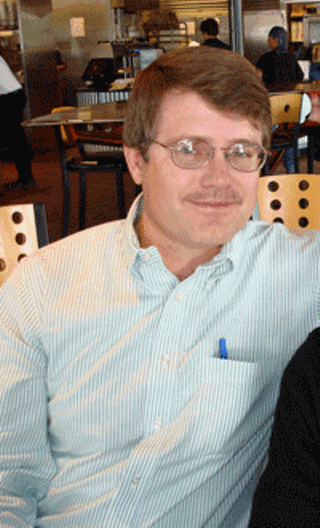How did the first cactus rescue take place?
It was back in July 1999. I was helping to design an elementary school building up in Oro Valley for the Amphitheater School District. It was on a 9-acre site surrounded by houses, but the 9 acres was pristine desert that had a lot of palo verde trees and barrel cacti, mesquite trees and other smaller cacti throughout the site. As I was walking around, I thought, "Gee I wonder how much of these the school is going to save and replant in the landscape for the new school." I asked the Amphitheater project manager what the plans for the school were, and given the budget constraints, they were only going to be able to save some of the palo verde trees and some of the larger barrel cacti.
Interesting.
I went to other members (of the Tucson Cactus and Succulent Society) and asked if there was a process by which the club could save some of these smaller plants from destruction and give them a new lease on life. I was made aware that there's a program through the state Department of Agriculture that allows the salvaging of surplus cacti from sites such as this. It's a simple, one-page form. I filled it out and took it to the project manager and said, "If you sign your name on this form, it will allow our club to go buy tags and save most of these smaller cacti." He said, "Where do I sign?" It was a win-win. It didn't cost them any money, and we didn't hold up any schedules in the construction of the school, and the program was born.
You mentioned that the rescue program has invigorated the organization. How?
I think the reason the rescue program has had such attraction is it gives people a sense of really doing something hands-on. It's not writing a check and sending $50 to The Nature Conservancy. Its blood, sweat and tears we experience out there, in freezing weather in the winter, and baking weather in the summer. It's a big collaborative effort. Some people dig big plants; some people dig small plants; and some people just tag plants. There's something for everyone to do. There's a strong sense that you're really doing something to help.
You end up working closely with the development community. How does that work?
We all understand development is inevitable. We try to bridge the gap between the developers and the conservation community. And we're just doing the best we can to make the best of the situation. My business is dependent upon development. I'm an engineer. If there's not development, if I don't design any new schools, if I don't design buildings for the University of Arizona, I don't make a living. I just want to make the development as sustainable as possible. We find out about areas up for development through the engineering and landscape-design community. In some cases, we might find out a rezoning just got approved through the county, or someone from the club sees a new sign go up on the corner that a development is taking place. We build relationships with developers and development professionals. We work closely with the county and municipalities, and the Department of Transportation.
Have you made any discoveries since the rescues started?
We rediscovered a cactus that was first described in the 1890s, and really hasn't had any research or publication since then. It's a yellow-flowered, yellow-spined, native barrel cactus. Our usual barrel cactus has spines that are maroon, black, brown or red, but this plant has yellow spines. In the course of our rescue activities, we've found five specimens of this out of literally tens of thousands of barrels. It's really a variety in the species. With our stock of these five plants that we've found in the course of nine years, from Oracle Junction all the way to Vail, I've managed to cross-pollinate some of these plants, (and) we are now producing plants with yellow spines. We're hoping to bring that into cultivation in the nursery stage so that if you want to buy one, you can buy one.





